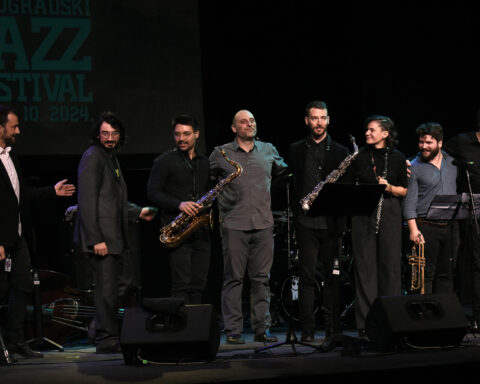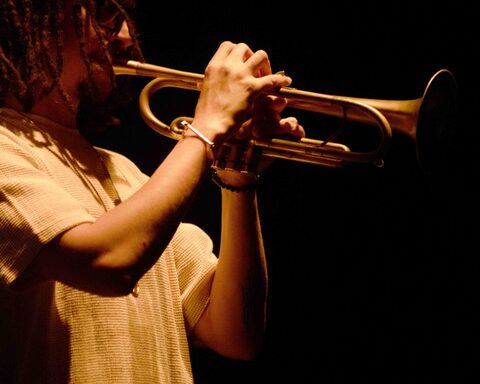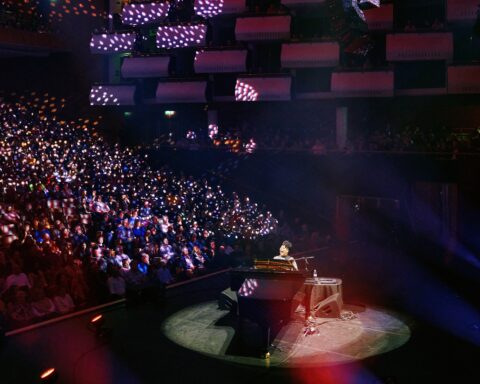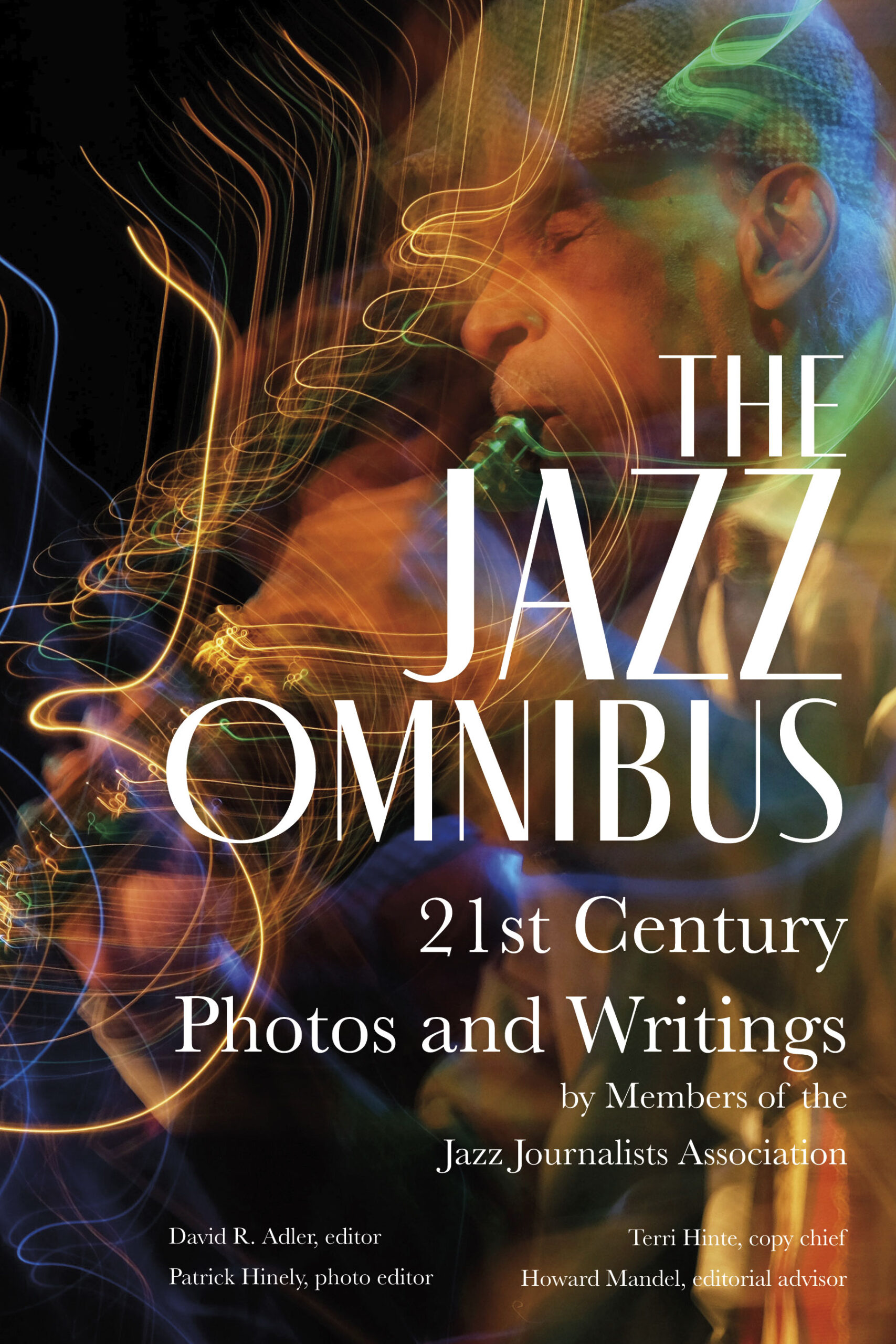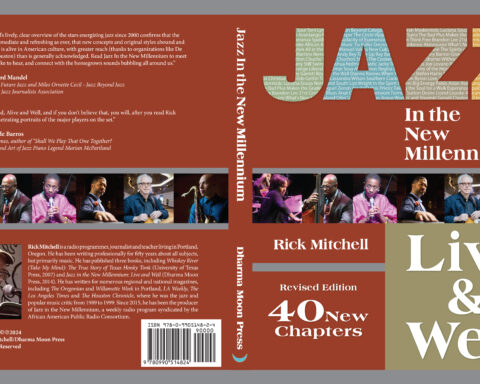On January 10, 2011, the Library of Congress announced its acquisition of a trove of recorded music from the vaults of Universal Music Group (UMG), spanning the years 1926-1948. The New York Times recently ran a story by Larry Rohter on the acquisition.
What is the true significance of this “mile of music”? We asked the JJA’s Larry Appelbaum, jazz specialist at the Library of Congress as well as a recording engineer, radio host, film curator, concert producer and jazz journalist based in Washington, DC. Larry has worked on preservation of the Library’s audio and video collections; he discovered the recently released tapes of Thelonious Monk with John Coltrane at Carnegie Hall, the Lester Young 1940 jam session discs and other historic recordings.
—
JJA News: Were you directly involved in the “mile of music” acquisition process?
Larry Appelbaum: No. The acquisition came via the Library’s Motion Picture, Broadcasting & Recorded Sound Division. I am a Senior Music Reference Specialist in the Library’s Music Division.
JJA: How much of this “mile of music” donation is available elsewhere, and how much is unique to the collection?
LA: It’s worth clarifying that the donation pertains to the physical materials only (metal parts and lacquer discs from the Brunswick, Decca and Vocalion labels) and does not apply to the intellectual property. My understanding is that the lacquers are safety copies made during transfers of the masters. Some lacquers contain in-studio chatter and alternate, previously unpublished takes. Due to the vicissitudes of the record business, many of the previously published master recordings are now out of print. So while much of the music may have been previously released, a lot of it may be out of print and widely inaccessible.
JJA: How much of it is jazz or jazz-related?
LA: It’s hard to say exactly, but if you look at the Decca, Brunswick and Vocalion catalogs, there is a significant percentage of jazz and vernacular music represented, along with pop, light classical, country, etc.
JJA: In practical terms, what will this change for jazz journalists and researchers in terms of material available in the public domain? Put simply, is this a big deal?
LA: How does one measure such things? For those who truly care about this music, it’s a big deal. First, it’s a window into American musical culture from the late 1920s through the late ’40s. The unpublished materials might alter or change our perspective on some classic or undeservedly obscure recordings. But there’s also the practical issue of access. Eventually, this collection will be catalogued and those catalogue records will be accessible online for anyone doing discographic and other kinds of music and cultural research.
JJA: How exactly will members of the public be able access this material?
LA: Once the materials are properly cataloged and digitized, the files will be stored and backed up on Library of Congress servers. Any researcher will be able to make a listening appointment to hear these materials in the Library’s Recorded Sound Reference Center, but the intellectual property will be retained by UMG. The agreement does include a commitment by UMG to allow some materials to be streamed from a Library of Congress website (the National Jukebox), but unless or until copyright laws are changed, we cannot allow downloading. Universal may and hopefully will make the files available via downloads, but since they retain rights, that decision is up to them.
JJA: The most talked-about recent unearthing of rare music is the Savory Collection, of course, at the National Jazz Museum in Harlem. How is this similar, and how is it different?
LA: Everyone was interested in seeing and hearing what Bill Savory had collected. But there are several important differences. First, just in terms of sheer numbers, the Savory Collection is approximately 1,000 discs. This collection of Decca, Brunswick and Vocalion masters and lacquers exceeds 200,000 discs and metal parts. Second, some of the Savory discs sound very good, but some do not. In this case, the vast majority of these metal parts and lacquers are pristine, and will produce better sound that what we’ve ever heard, even from the published and reissued versions of these materials. And lastly, the provenance of the Savory materials is a bit murky, which will make securing permissions to release quite complicated. In this case, we know exactly where these materials came from and who owns the rights, so negotiating access will be relatively straightforward. For example, Mosaic Records and various other labels will continue to mine this material. But at least it will be in a safe place and eventually properly cataloged, digitized and preserved.
JJA: Can you shed any light on how the UMG-Library of Congress deal came about?
LA: I was not part of the negotiation, so I can only offer my personal opinion and perspective. I can assume that this was driven initially, and in large part, by UMG’s decision to cut costs. It’s expensive to store such a collection at Iron Mountain [a facility in a former limestone mine, near Boyers, Pennsylvania], where it had been residing. And unless you have experience, expertise and resources, it can be daunting to launch an extensive preservation project for such a collection.
JJA: Had UMG explored the option of archiving and digitizing this material itself?
LA: I don’t know, but was that considered cost-effective in their business model? I doubt it. Only a small percentage of this collection will generate any real income for a multinational corporation.
Of course, it’s also worth noting that there was a fire at the Universal vaults a few years ago (with varying reports on the extent of damages). And UMG currently stores their materials at various locations around the world and likely wants to consolidate them. It would not surprise me if UMG saw this as a win-win: they get to retain intellectual property rights, but the responsibilities and headaches of storage, cataloging, digitization and preservation are now assumed by the Library of Congress. On the other hand, America’s library and the American people now have possession of and access to an extraordinarily rich resource into American music and culture.

